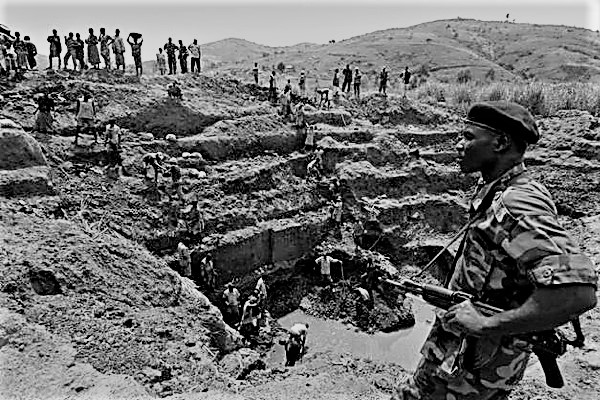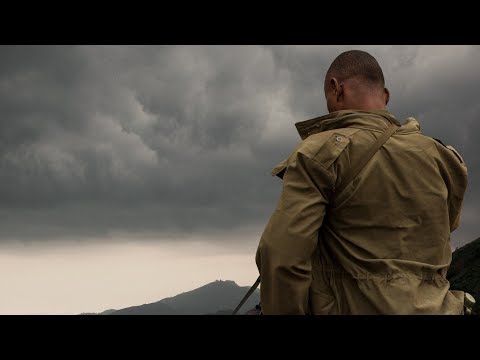One of Africa’s most rare-minerals-rich countries, the Democratic Republic of Congo, has nevertheless endured continual poverty and internal strife, stemming from Belgian colonization and slavery, where militant groups control the extraction of “conflict resources” like coltan mining. The tech industry turns these raw materials into components of mobile phones and computers. Yet the cost is deadly, including forced labor, often involving children, and taking a massive environmental toll on one of the most biodiverse regions in the world.


Coltan, the Congo, and Your Cell Phone
Excerpt By Ewan Sutherland, University of the Witwatersrand, LINK Centre
Civil wars often concern and are frequently extended by the presence of natural resources (e.g., ‘Blood Diamonds‘ in Sierra Leone). Control over the Coltan ores (geological name Columbite Tantalite) in the eastern part of the Democratic Republic of the Congo (DRC) has helped to fund domestic militia and foreign armies, prolonging the war crimes and human rights abuses committed there over many years.
From Coltan ores are extracted the metals tantalum and niobium which have several uses in advanced technology products, notably in high density capacitors used in cameras, mobile phones and other compact electronic devices. When Coltan is refined it becomes a heat resistant powder that can hold a high electric charge.
One of the principal sources of Coltan has been the DRC. Artisanal freelancers, known by the French word creuseurs, use picks and shovels to dig up the raw materials; child labor is common. A report from Amnesty International on cobalt mining cited estimates from UNICEF that about 40,000 boys and girls work in mines across Congo, many of them at Coltan sites.
STORY: Cinematic Cultural Change in West Africa with Idrissa Ouédraogo

Watch this video on YouTube
Congo, My Precious. The curse of the coltan mines in Congo, from RT Documentary
The United Nations Security Council has supported peace-making efforts in DRC. It has also sought to eliminate the flow of funds to militia groups through their sale of Coltan ores or “taxes” imposed on such sales.
In 2017-18, the human rights situation in the DRC further deteriorated. Violence in the Kasaï region left thousands dead, at least 1 million internally displaced, and caused more than 35,000 people to flee for neighboring Angola. In the east, armed groups and government forces continued to target civilians and engage in illegal exploitation of natural resources with impunity. Police, intelligence services and courts continued to crack down on the rights to freedom of expression, association and peaceful assembly. Human rights defenders and journalists were harassed, intimidated, arbitrarily arrested, expelled or killed. — Amnesty International
The International Court of Justice (ICJ) has held that removal of Coltan ores by an occupying foreign army is looting and a war crime.
The Organization for Economic Co-operation and Development (OECD) has developed guidelines for the due diligence which multi-national corporations should use to ensure the provenance of minerals and metals that might originate from the DRC. This supports the UN in its efforts to suppress funding for groups engaged in war crimes and human rights abuses.
The world’s largest gorilla sub-species has seen its population fall 77 percent over the past two decades, a trend linked to illegal mining for coltan, a key mineral used in the production of cell phones and electronics, a 2016 report has found. — Reuters
STORY: Child Labor: The Dark Side of Chocolate
The USA has legislated to require due diligence, auditing and public reporting of the use of such minerals. Its Securities and Exchange Commission (SEC) has developed the detailed reporting requirements for users of possible “conflict minerals.” The Trump Administration has proposed to repeal and replace Section 1502 of the Dodd-Frank Act in 2017, which sought to create demand by multinational corporations to only source certified “conflict-free” minerals. Without this regulation in place, warlords can stay in business. The EU has also debated how to identify sourcing and adopt a similar policy.

Watch this video on YouTube
The documentary This is Congo provides an immersive and unfiltered look into the world’s longest continuing conflict and those who are surviving within it.
Industry groups have established voluntary procedures that complement the OECD guidelines in certifying the source of metals in final products. While much progress has been made, there is still considerable work required to ensure the traceability of ores, both in terms of geochemistry and in audited documentation.
Updated 4 March 2023









Pingback: Pushing Back Against the Venezuela Coup-Plotters | WilderUtopia.com
Pingback: Sweatshop Labour: Part 2 – One Girl's Liberation
Pingback: Black Kings, Queens & the Power of “Both/And” – Valencia Clement, M.P.P.
Pingback: Morning in Hell - Free World Economic Report
Pingback: Papua New Guinea: Sepik River Initiation and the Crocodile Cult